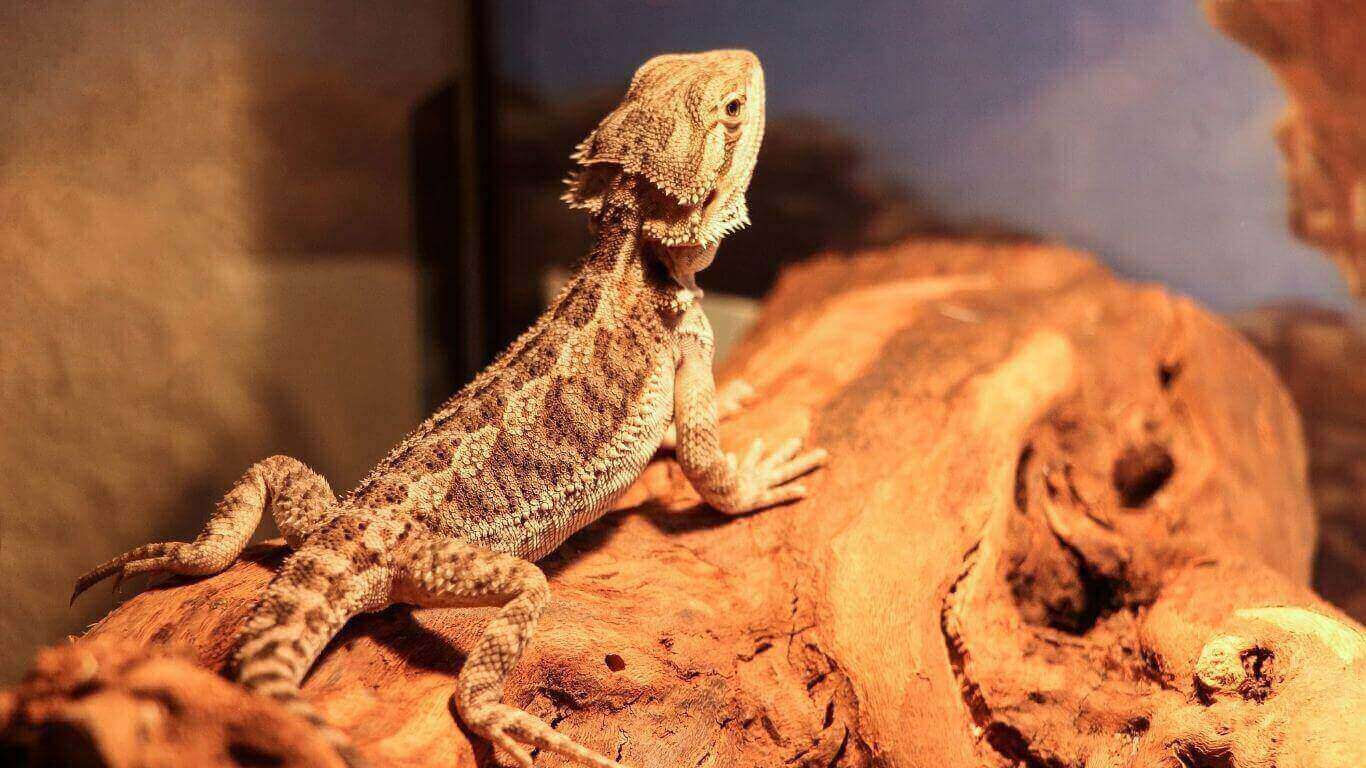
Bearded dragons are reptiles. Most reptiles are cold-blooded, and since bearded dragons are reptiles, they need enough heat to live and thrive.
Bearded dragons may suffer from weight loss, tiredness, and appetite loss should there be inadequate temperature.
Bearded dragons are native to Central Australia’s arid, semi-desert regions, where the temperature soars beyond 110 degrees Fahrenheit during the day and descends below 70 degrees Fahrenheit at night.
Therefore, you should try as much as possible to mimic this temperature in your bearded dragon’s enclosure if you want them to stay active and healthy.
Best Tank Temperature for a Baby Bearded Dragon
Between 0 to 6 months, bearded dragons are considered to be babies. At this age, bearded dragons need more heat than their adult counterparts need.
When you have a baby beardie, you should ensure that its basking area temperature is between 100°F and 110°F. Additionally, you should ensure that the temperature of the tank is between 80°F and 90°F when it is a bit cooler.
Best Enclosure Temperature for A Juvenile Bearded Dragon
The temperature requirements for juvenile beardies are nearly identical to those for baby beardies. Juvenile bearded dragons are between 6 months and 18 months. Their basking temperature should be a bit cooler than the baby beardies.
The basking area temperature should be between 95 °F and 105°F (35 to 40°C). When it is cool, the beardies enclosures temperature should revolve around 75°F and 80°F (27 and 27°C)
Best Cage Temperature for an Adult Bearded Dragon
Adult bearded dragons are aged 18 months and above. At this age, you should ensure your beardie basking area temperature is between 90°F and 95°F. When the temperatures cool down, your beardies enclosure’s temperatures should revolve around 80°F and 90°F.
Bearded dragon nighttime enclosure temperature
Bearded dragons’ natural habitat is the desert, where temperatures are a bit extreme. However, they do not need extremely high temperatures all the time. This is because deserts are always cold at night.
Additionally, bearded dragons require a cool, dark environment to sleep well. To mimic their natural habitat in your terrarium, keep the temperature between 70- and 75-degrees Fahrenheit and turn off the basking light.
However, ensure sure the temperature in the cage does not fall below 60 degrees. You can use a ceramic heater at night to keep the terrarium at a consistent temperature.
How to know if your bearded dragon is getting enough heat
Bearded dragons are capable of controlling their body temperature. You will notice your bearded friends opening their mouths. This helps bearded dragons in dispersing the additional body heat when their body temperature rises above the ideal level while sunbathing.
Bearded dragons are noted for their gaping behavior. So, experiment with different basking temps to check if your beardie is gaping. If not, it’s possible that the basking place is not getting enough heat.
Bearded Dragon Overheating Symptoms
The temperature within your terrarium may be affected if the outside weather is extremely hot and dry. As a result of the excessive heat, your bearded dragon may become dehydrated. Check if your bearded dragon is staying away from the basking area for most of the day to see if it is overheated.
Heavy breathing, dry heaving, and weight loss are further overheating symptoms to be aware of. Give your bearded dragon a bath if you think it’s getting too hot. You should consult your pet vet if the symptoms persist.
How to create a temperature gradient
Your bearded dragon’s enclosure should have both basking and cooling spots. This will help your bearded friend in regulating their body temperatures by moving between cool and hot zones as much as they need. When you want to create a perfect temperature gradient in your beardie’s enclosure, you will need: –
-
Heating bulbs
There are two types of heating bulbs. They are: –
– Light-emitting bulbs. These bulbs are ideal if you want both heating and lighting in your beardies’ basking area. Such bulbs are incandescent bulbs and halogen bulbs
– Non-light emitting ceramic bulbs. These bulbs only emit heat without any light, and there are ideal for your beardie’s enclosure nighttime heating.
-
Thermostat
The temperature inside a terrarium is automatically controlled by a thermostat, making life easier for bearded dragon owners. A probe is included with the gadget, which reads the current temperature and adjusts the heating accordingly.
There are two types of thermostats
– Dimming thermostat. This goes with light-emitting bulbs. It will send power gradually in the beardies enclosure and then lead to gradual brightening or dimming in the tank.
– Pulse thermostat. This goes with a non-light emitting ceramic bulb, and it sends power in pulses.
-
Heat mats
Another fantastic method for creating a temperature gradient inside your bearded dragon enclosure is heat mats. Heat mats typically emit infrared radiation to provide uniform warmth throughout an enclosure. However, if you lay the heat pad on one of the bearded dragon cage’s sidewalls, it will help you produce a smooth temperature gradient across the terrarium.
Conclusion
Bearded dragons are active pets that will keep you entertained in your home.
Getting to know the right temperature they need is crucial in their day-to-day being. Your bearded friend will be happy and active with the correct enclosure temperature.
- Are you supposed to clip a bearded dragon’s nails? - October 21, 2022
- What do you do when you first get a bearded dragon? - October 21, 2022
- What is the best vegetable for bearded dragons? - October 21, 2022
